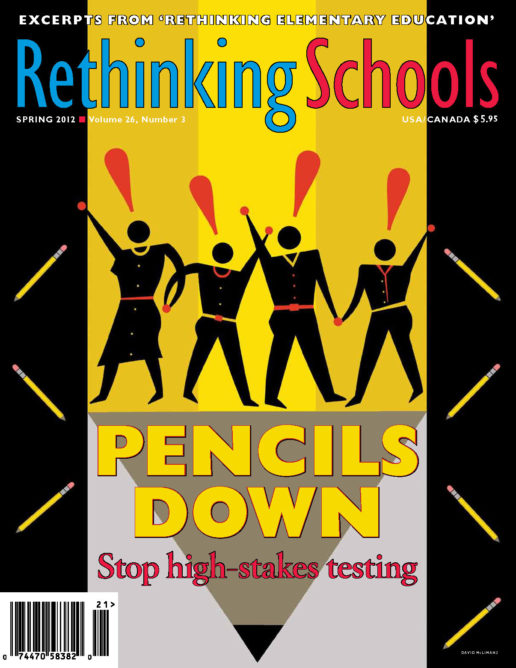Preview of Article:
Sin Fronteras Boy
Students Create Collaborative Websites to Explore the Border
Illustrator: Jared Rodriguez
Around one table, four 4th-grade girls chat quietly as they write on their laptops: Ruby interviews Alejandra about her experience crossing the U.S.-Mexico border as a 6-year-old. Meanwhile, Cindy turns notes from an interview with her uncle into a narrative about his immigration experience. Next to them, four boys work on the Sin Fronteras Boy website, a choose-your-own-adventure story about a boy who tries to cross the border and becomes a superhero after his mother is grabbed by la migra (immigration agents). I am working with the indigenous peoples group, helping Roberto understand a recent article about the U.S. government’s attempted seizure of Lipan Apache land for the construction of the border wall, while Karolina looks for photographs of the Lipan Apache, Yaqui, Kickapoo, Yuma, and Tohono O’odham peoples, all tribes that are currently affected by U.S. border policy.
We are hard at working making wikis—simple websites that can be collectively written and edited. Wikis are easy to set up through hosting sites like wikispaces.com or pbwiki.com, and are usually free for educators. Once a wiki has been created, members can add content, create new pages, and make changes to the content. This allows students to write collaboratively, adding to and revising each other’s work. (Teachers can also track students’ individual contributions.) The three wikis created by the 11 English language learners in my reading group are very different from each other, ranging from the fantastical to the deeply personal. However, all explore our central question: How does the border affect our lives?
It is an important topic for these students, either immigrants themselves or the children of immigrants, living in a largely Latina/o community in Oakland, Calif. The goal is for students to improve their writing and their English language skills through working together. It is also for students to come together as a classroom community to support each other in exploring the sensitive and controversial topic of U.S.-Mexico border policy. I do my best to facilitate a collaborative writing experience by encouraging the group members to outline and research the websites together, read and discuss each other’s contributions to the wikis, and revise each other’s pages. As students work collaboratively to make their websites, they write and talk their way into not only a deeper understanding of the English language, but also of the world they live in. They begin, slowly but surely, to identify injustices and construct their own imaginative visions of a more just world.

